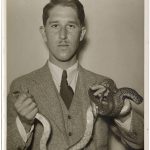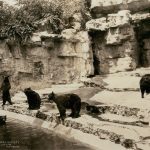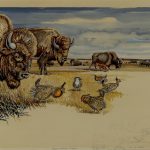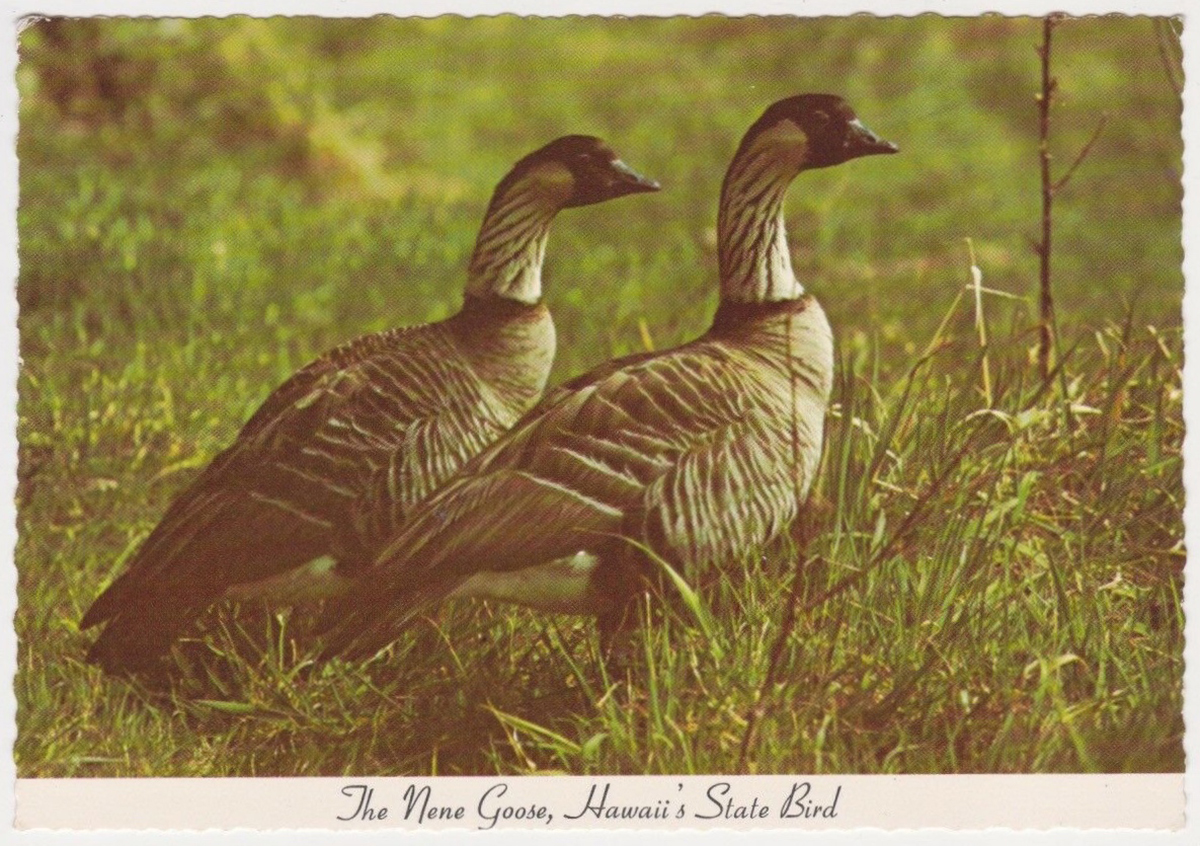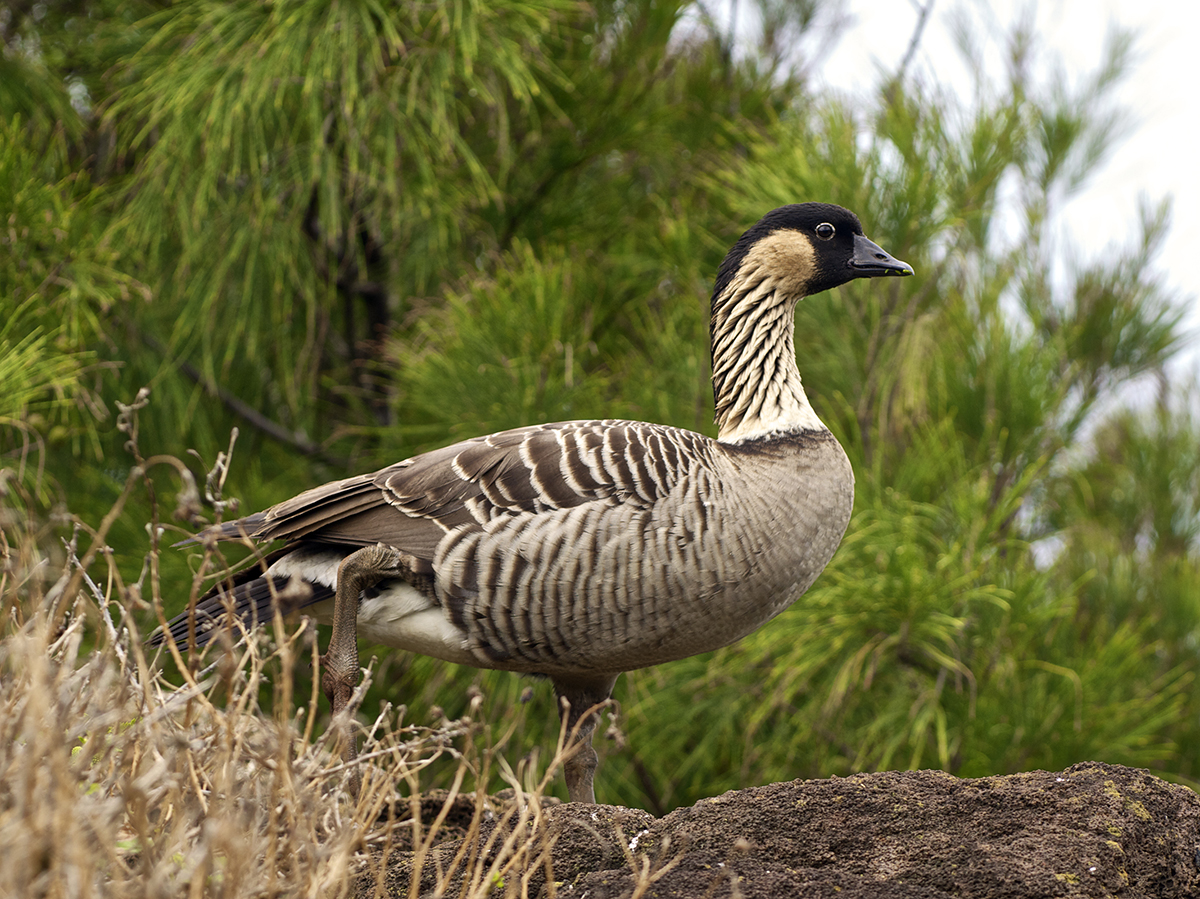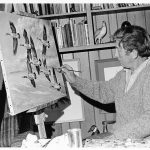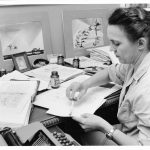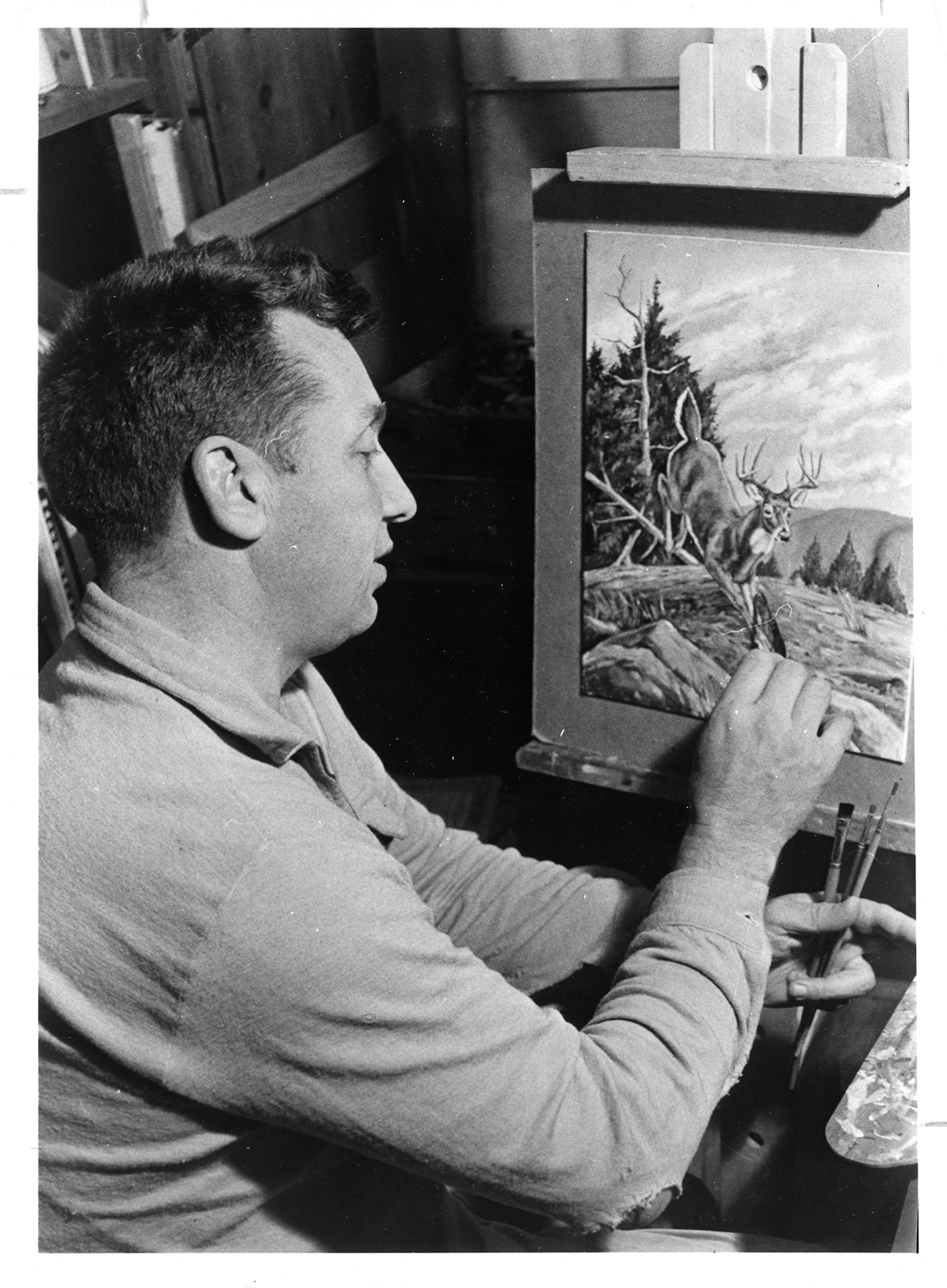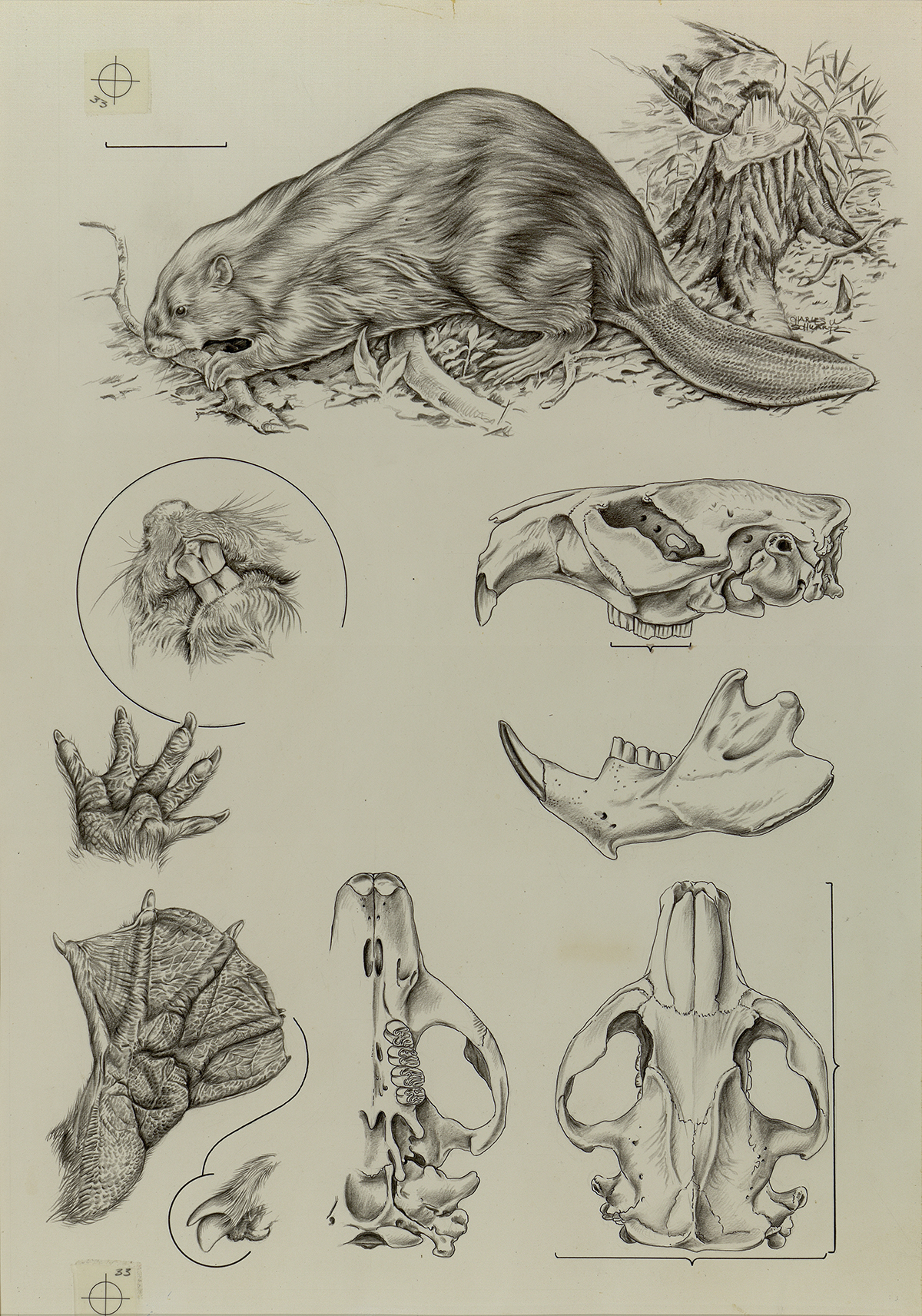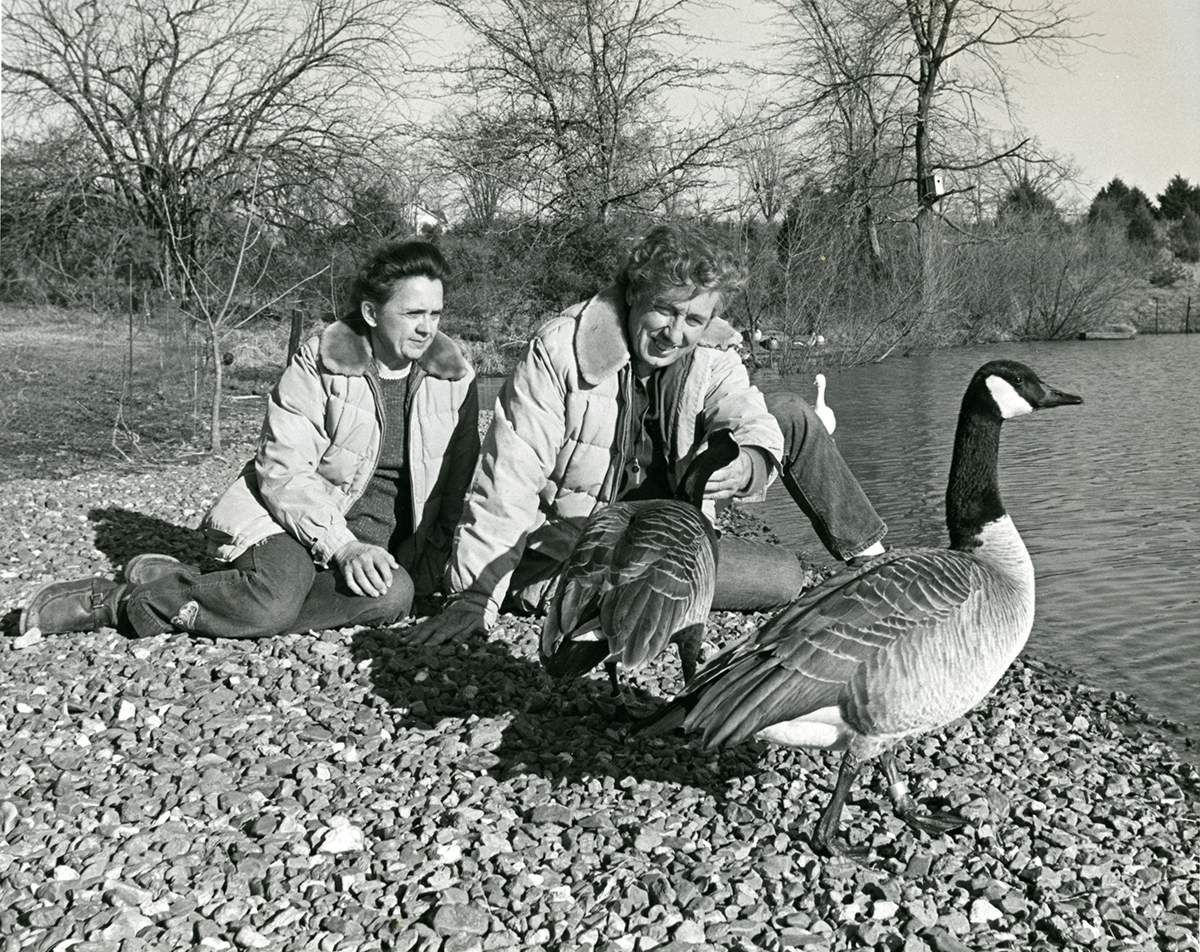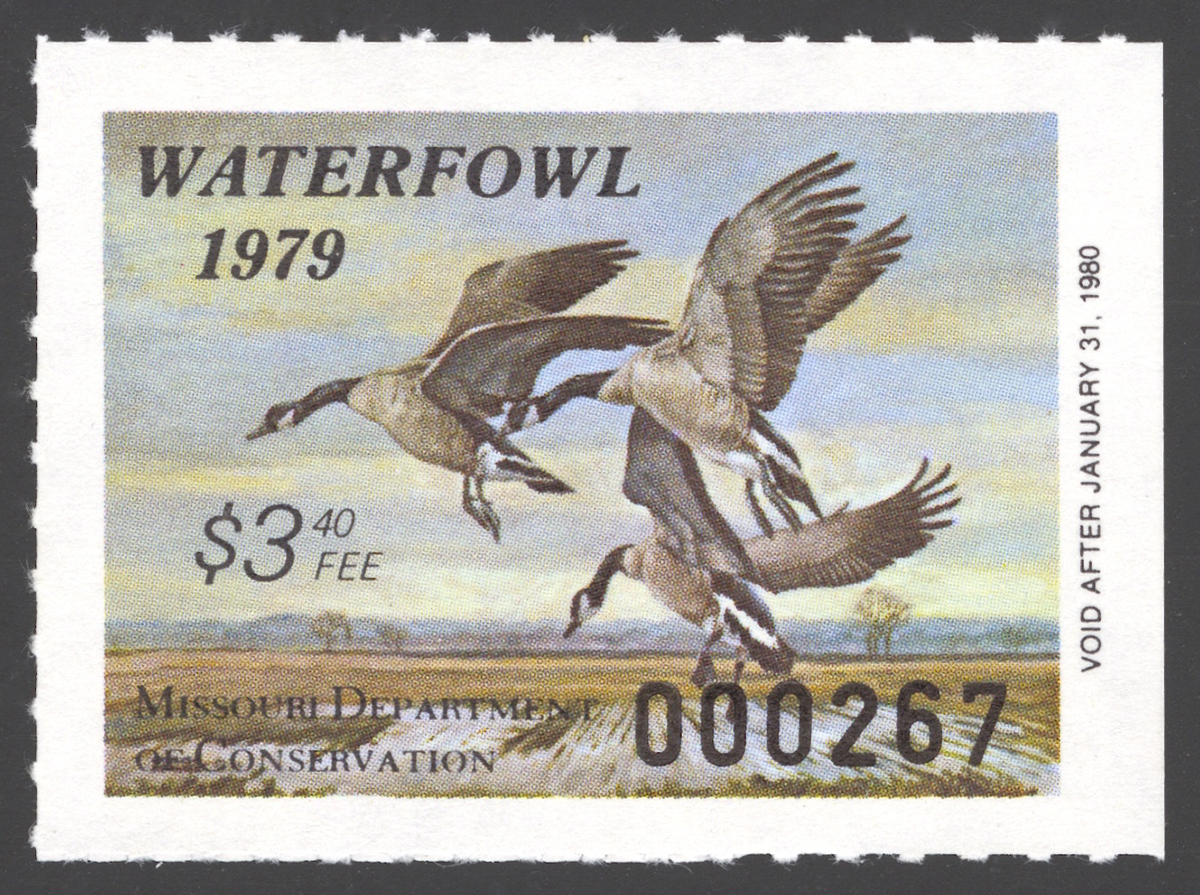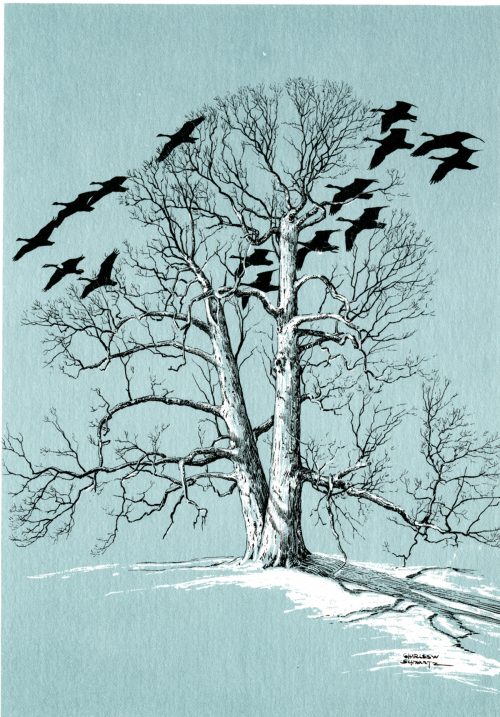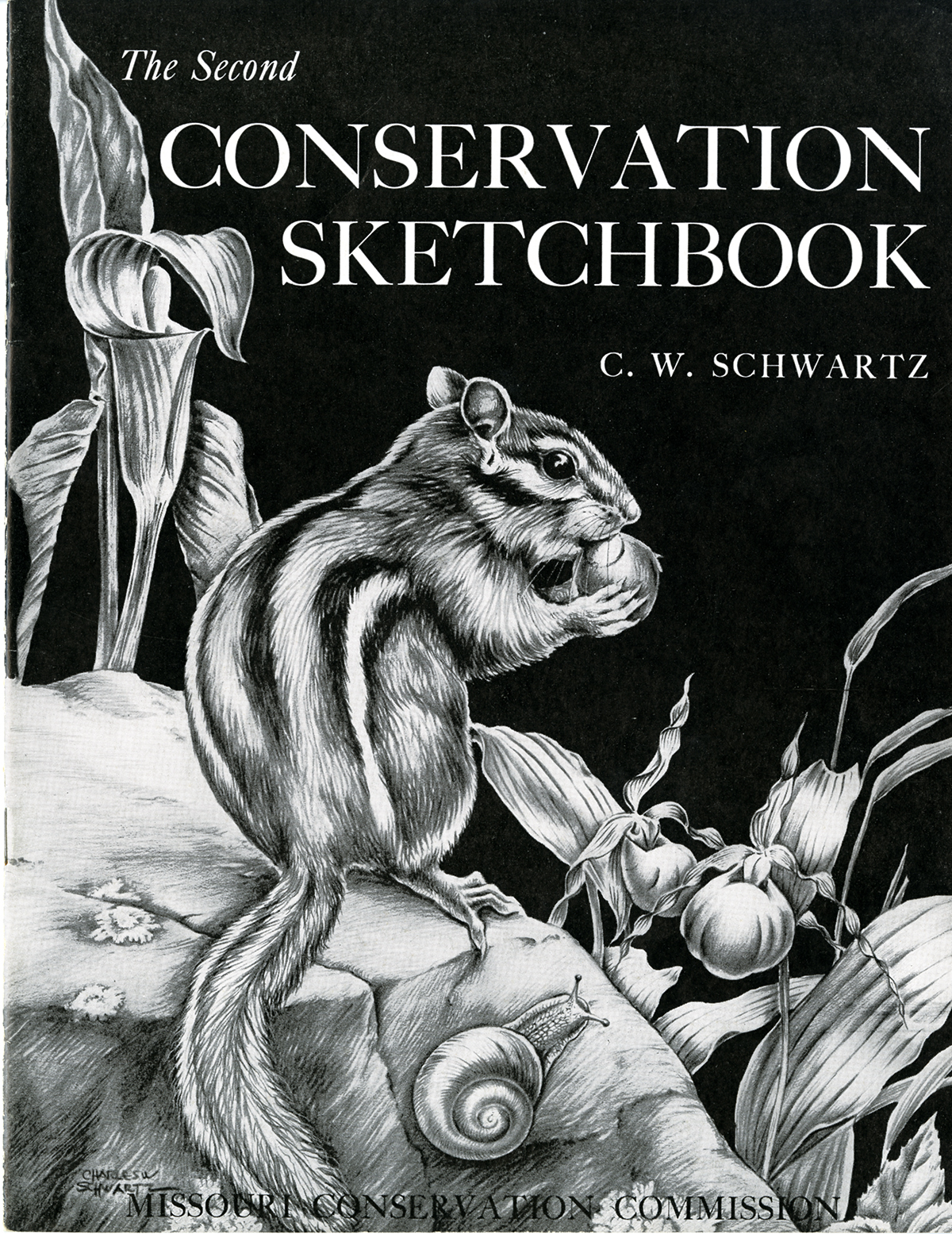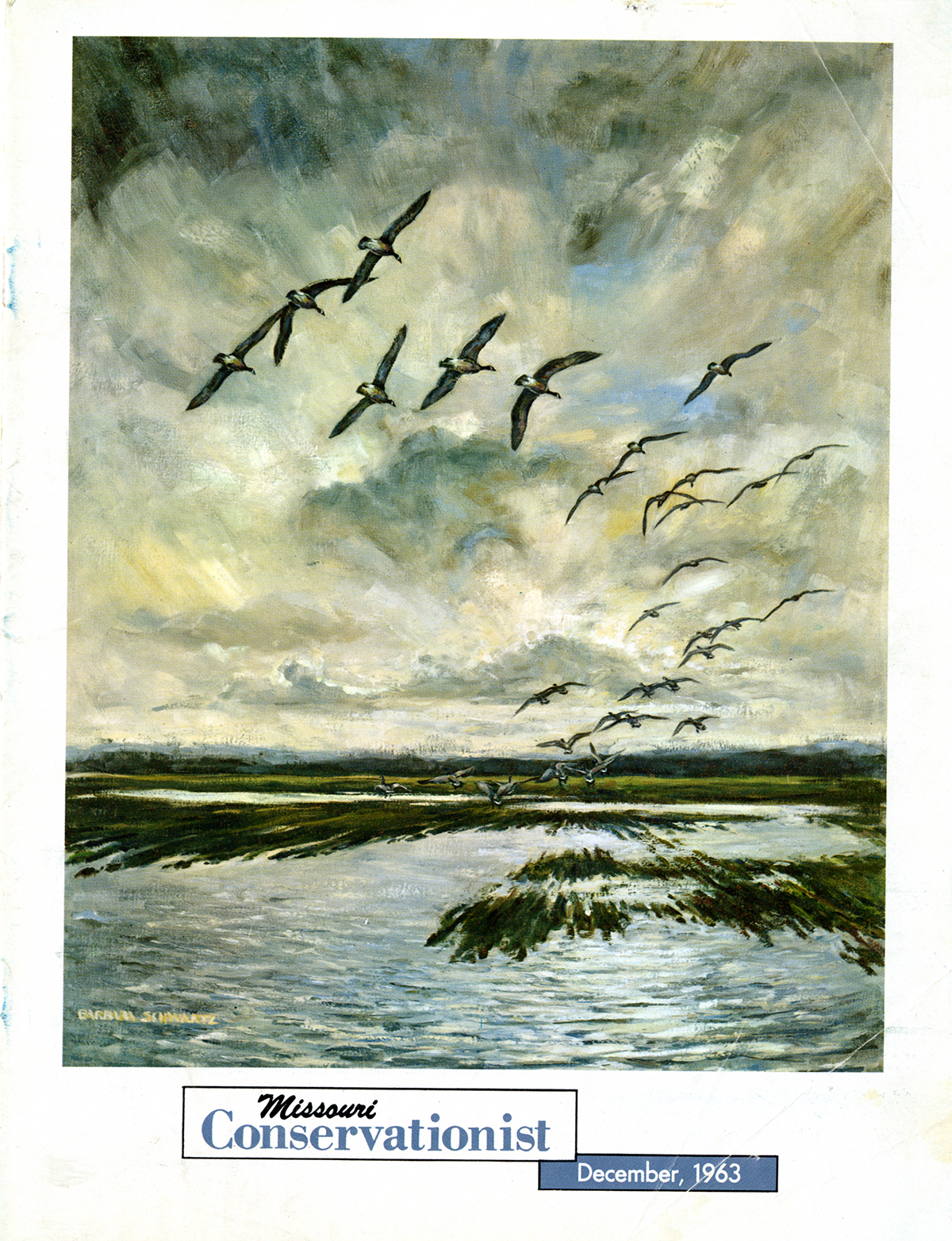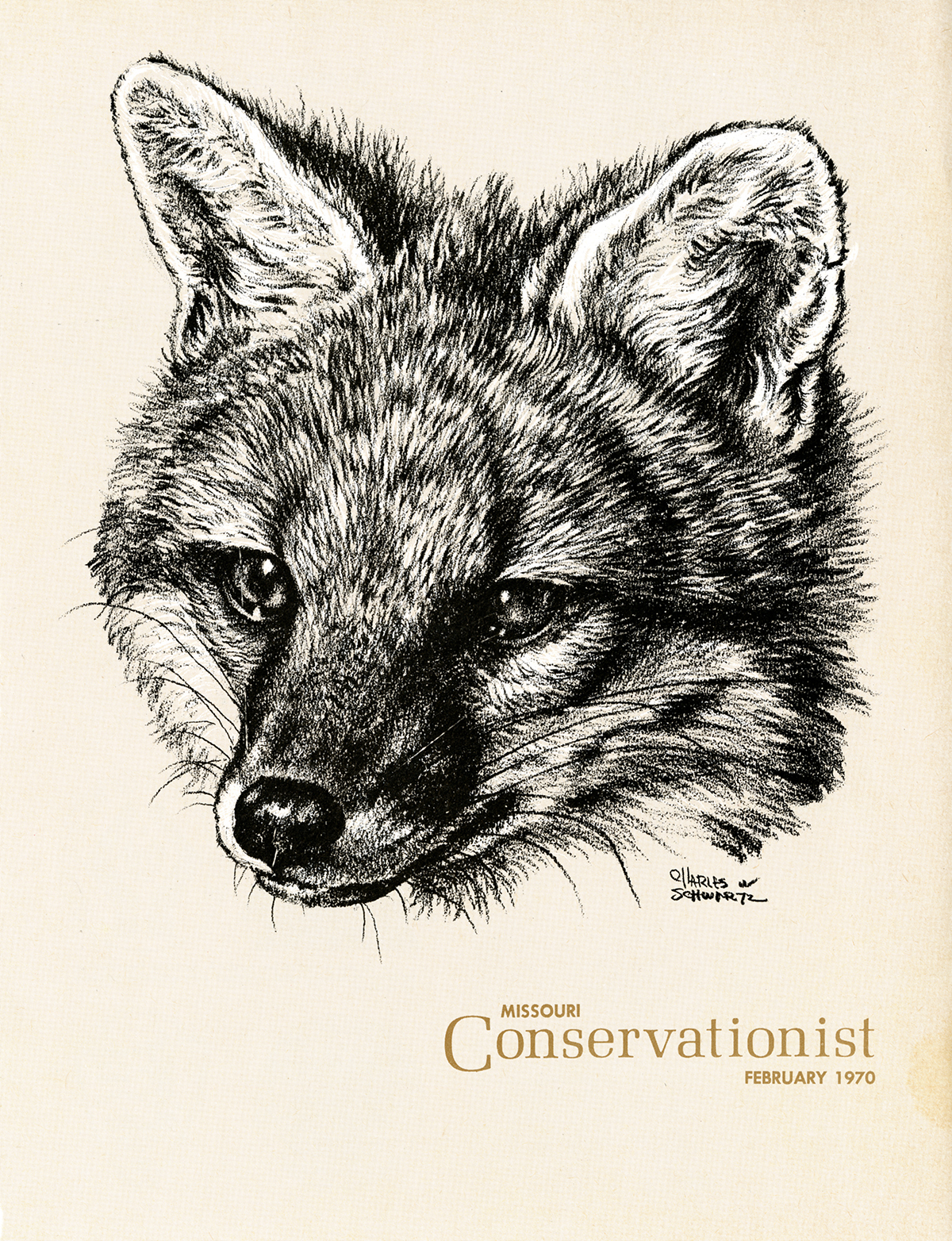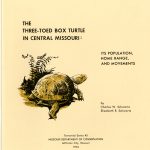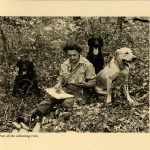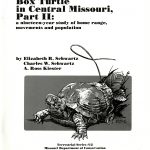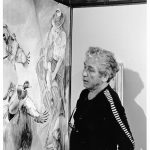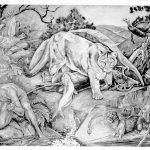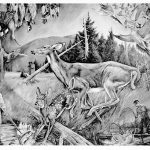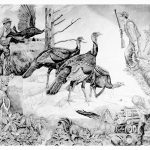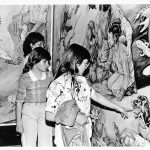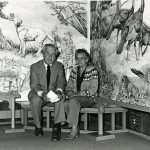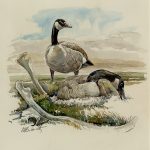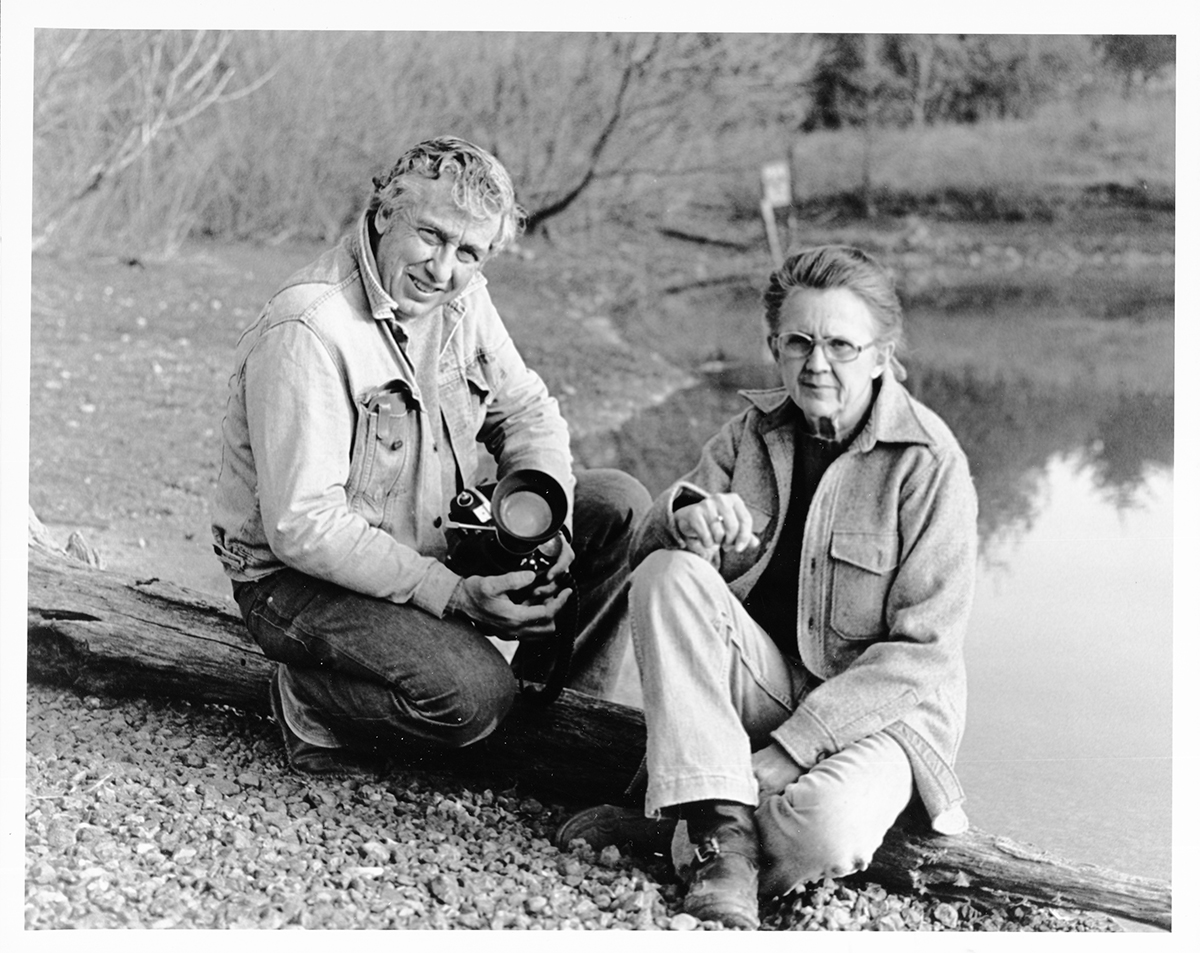
Charles W. and Elizabeth Schwartz

Introduction
Charles W. Schwartz, one of the country’s most influential wildlife artists, and his wife, Elizabeth, contributed significantly to the conservation and environmental movements of the twentieth century. Together the Schwartzes produced twenty-four nature films and wrote or illustrated a dozen important wildlife books. With the help of Elizabeth, Charles also designed more than a dozen popular stamps of fish and waterfowl.
Early Years and Education
Charles Walsh Schwartz was born in St. Louis on June 2, 1914, to Frederick O. Schwartz and Clara Walsh. His father was a doctor and amateur naturalist. “Carl,” as young Charles was then called, became interested in studying wildlife at a very young age. He spent much of his free time at the St. Louis Zoo in Forest Park, where he met and enjoyed a close friendship with zoologist Marlin Perkins. Perkins helped cultivate Charles’s love of the outdoors and wild animals.
Elizabeth “Libby” Morrow Reeder was born on September 13, 1912, in Columbus, Ohio, to Charles W. Reeder and Lydia Morrow. Her father was a business administration professor at Ohio State University and her mother was an artist. Elizabeth demonstrated an early interest in the environment. “When I was a girl, I loved to go to Girl Scout camp and identify flowers and stars. I used to try for all the badges and pump the leaders for all the information I could get.”
After graduating from McBride High School, Charles attended the University of Missouri on a football scholarship. After an injury ended his athletic career, he focused on biology and zoology classes. Charles also honed his skills as an artist and photographer. He recalled, “In those days, all students had jobs. I collected specimens for my department head, W. C. Curtis, and drew wildlife sketches for fun. Unknown to me, however, Professor Curtis was collecting drawings I threw away. Later, he asked if I would illustrate a new book of his. That was the start of it.”
Elizabeth completed degrees at Ohio State University in Columbus and Columbia University in New York before enrolling in the PhD program at the University of Missouri in 1934. Charles was accepted as a graduate student at MU in 1938. Elizabeth and Charles met in the zoology department when he was assigned to her as a research assistant. They soon discovered they shared many interests in addition to zoology.
Elizabeth finished her doctorate in 1938, and the couple married that year on December 22. Charles completed his master’s degree in 1940. They called each other Charlie and Libby and had three children together: Barbara, Bruce, and John. Working as a team, the Schwartzes soon became important to the conservation and environmental movements of the twentieth century.
Missouri Conservation Commission
In July 1940, Charles was hired as a biologist by the new Missouri Conservation Commission. The commission manages and conserves all of the state’s wildlife resources. Elizabeth soon left teaching to join him. Their first assignment, to study prairie chickens, resulted in the illustrated book The Prairie Chicken in Missouri (published in 1944) and their first feature film (made in 1948).
The Schwartzes also met another young couple working on prairie chickens in Wisconsin, Fred and Fran Hamerstrom, who introduced them to Aldo Leopold. Leopold was an American writer, naturalist, and professor at the University of Wisconsin whose work on ethics influenced the early environmental movement.
Hawaii and the Nene Goose
Leopold was impressed with the Schwartzes and recommended them for a temporary position with the Board of Agriculture and Forestry in Hawaii. The Schwartzes were hired and became part of a team effort to save the Hawaiian Nene goose from extinction.
The couple knew little about Hawaii and its wildlife when they started, but they set out to learn everything they could. “Charlie would collect the birds and I would stay in camp, dissecting them on the tailgate of our Jeep and watching the kids while they played in the volcanic dust,” Libby recalled. “At night, we would go over the birds together to identify foods, parasites and breeding activity.”
Charles later said of their time in Hawaii, “It got pretty rough…the entire family living out of sleeping bags and jeeps for so long. It was hard going at times…involving much of the flora and fauna…the total ecology of the islands. But we accomplished a lot.”
After studying the geese, the Schwartzes thought that while the Nene had enough food, there were not enough breeding areas for them to survive. They suggested a combination of old and new game management techniques, including breeding captive birds. Their work resulted in the award-winning book A Reconnaissance of the Game Birds in Hawaii (1949). It brought widespread attention to the bird’s dire situation; its population dropped to only thirty birds by 1960. Due to successful restoration and recovery efforts, there are now more than 2,800 Nene geese in Hawaii, and the US Fish and Wildlife Service changed the status of the Nene from endangered to threatened in January 2020.
Writing and Filmmaking
Upon leaving Hawaii, Charles and Libby returned to work for the Missouri Conservation Commission (where Libby had been hired full-time in 1950) and began to focus on conservation-themed feature films. The films included many critically acclaimed and award-winning productions, such as Bobwhite through the Year (1953), which won the CONI Grand Medal at the International Sports Film Festival as well as a Conservation Education Award from the North American Wildlife Society.
Their return to Missouri also marked the beginning of a busy three-decade stretch for Charles and Libby. They wrote and illustrated articles for the Missouri Conservationist magazine and a series of conservation-themed children’s books. They also illustrated three books for the Leopold family, including the classic A Sand County Almanac (1949) and Wildlife of Mexico (1959). In 1959 they also published one of their best-remembered works, The Wild Mammals of Missouri.
Containing more than 400 illustrations, Wild Mammals included information on more than sixty species of animals that live in Missouri. The American Association for Conservation Information chose it as the outstanding wildlife book of 1959. The book remained so popular that revised editions were published in 1981 and 2001.
Artwork and Stamps
During the 1960s, Charles created the first four (of eight) large multicolor panels for a mural in the Missouri Department of Conservation headquarters in Jefferson City. The mural depicts the story of conservation in the state from pre-settlement to modern times. He also created the artwork for Missouri’s first fourteen trout stamps, starting in 1969. These eye-catching stamps not only raised money to fund increased fishing opportunities in Missouri but also captured the attention of stamp collectors.
Charles designed the logo for the Department of Conservation in 1970, and in 1976, he contributed a painting of Canada geese that raised $80,000 at a critical point to help promote the passage of a new conservation tax in Missouri. Missourians approved the proposed amendment that dedicated a portion of the state sales tax to fund the newly expanded conservation program.
In 1979 Charles was selected to create the artwork for Missouri’s waterfowl stamp and print. His book Wildlife Drawings, a collection of wildlife art accompanied by personal notes, was published in 1980.
Box Turtles
Beginning in 1965, the Schwartzes embarked on a nearly two-decade study of three-toed box turtles after purchasing a tract of land near Jefferson City. This was a project they undertook in their spare time while continuing their work as biologists at the Missouri Department of Conservation.
Using trained dogs to help them find the turtles, they located approximately six thousand turtles by the end of the project. Charles and Libby also used radio tracking and a trailing device to study the turtles’ population, home range, movements, and habitat. Their research on box turtles resulted in two reports published in 1974 and 1984.
Retirement and Death
Charles and Libby retired in 1981 and moved to Coeur d’ Alene, Idaho, to be close to their children and grandchildren. In retirement, they stayed active. Charles finished the last four panels of his Missouri Department of Conservation mural in 1987, just in time to celebrate the department’s fiftieth anniversary. The Schwartzes also began work on a new book, About Mammals and How They Live, and spent time duck hunting and enjoying various outdoor activities with their family and friends.
In 1991 Charles died at age seventy-seven of pancreatic cancer. Libby completed About Mammals on her own, and it was released in 1993. Reflecting on her long career, Libby noted, “I never felt any discrimination, but I broke the ice in a lot of places.” She passed away on her birthday in The Dalles, Oregon, on September 13, 2013, at 101 years old.
Legacy
In 2010 the Conservation Federation of Missouri, the State Historical Society of Missouri, and Bass Pro Shops joined together to create an exhibition of Charles’s artwork and sculpture to pay tribute to one of the Show-Me State’s most influential artists.
Together, Charles and Elizabeth Schwartz worked tirelessly to create art, books, photography, and film that taught the importance of wildlife and the natural environment. They helped shape the modern conservation movement in Missouri and the United States.
Text and research by David R. Torre and Elizabeth E. Engel
References and Resources
For more information about Charles and Elizabeth Schwartz’s life and career, see the following resources:
Society Resources
The following is a selected list of books, articles, and manuscripts about Charles and Elizabeth Schwartz in the research centers of The State Historical Society of Missouri. The Society’s call numbers follow the citations in brackets.
Articles from the Missouri Historical Review
- “Charles Schwartz Enhances Society’s Art Collection.” v. 82, no. 1 (October 1987), p. 98.
- “Charles W. Schwartz: Missouri Wildlife Artist and Author.” v. 67, no. 4 (July 1973), pp. 576-584.
Articles from the Newspaper Collection
- Allen, Patricia. “Scientific Americans.” Columbia Missourian. Vibrations Magazine section. October 23, 1977. pp. 8-11. [Reel # 7793]
- Clayton, Chris. “Schwartz Book Holds Artist’s Final Offerings.” Columbia Daily Tribune. October 2, 1993. p. 1. [Reel # 8599]
- Thornton, Hamilton. “Youthful Naturalist Has Turned His Mother’s Home into a Veritable Menagerie.” St. Louis Globe-Democrat. Magazine Section. September 15, 1929. pp. 1, 12. [Reel # 39873]
- Young, Virginia. “Capturing the Heart of the Wild.” Columbia Daily Tribune. Magazine Section. January 23, 1977. pp. 5-7. [Reel # 8398]
Books and Articles about Charles and Elizabeth Schwartz
- Christensen, Lawrence O., William E. Foley, Gary R. Kremer, and Kenneth H. Winn, eds. Dictionary of Missouri Biography. Columbia: University of Missouri Press, 1999. pp. 678-679. [REF F508 D561]
- Keefe, Jim. “The Schwartzes Live with the World.” Missouri Alumnus. v. 58, no. 3 (November 1968), pp. 32-35. [REF 378.778UMC T17]
- Peach, Laurie. “Libby Schwartz: Partner and Pioneer.” Missouri Conservationist. v. 53, no. 8 (August 1992), pp. 4-9. [REF M799 M691m]
- Townsend, Robert S. “Missouri’s Expert Wildlife Artist.” Missouri Highways. (Winter 1969-1970), pp. 2-8. [REF M917.78 M691mh]
- Vance, Joel M. “Who’d Believe a Story Like That?” Missouri Conservationist. v. 38, no. 5 (May 1977), pp. 17-18. [REF M799 M691m]
Books Written and Illustrated by Charles and Elizabeth Schwartz
- Schwartz, Charles W. The Ecology of the Prairie Chicken. Columbia: University of Missouri, 1945. [REF 378.778UMC M15 v. 20, no. 1 (1945)]
- Schwartz, Charles W. The Prairie Chicken in Missouri. [Jefferson City?]: Conservation Commission, State of Missouri, [1944]. [REF F598 Sch96]
- Schwartz, Charles W. and Michael McIntosh, ed. Wildlife Drawings. Jefferson City: Missouri Department of Conservation, 1980. [REF F598 Sch96w2]
- Schwartz, Charles W. and Elizabeth R. Schwartz. About Mammals and How They Live. Jefferson City: Missouri Department of Conservation, 1993. [REF F598 Sch96a]
- Schwartz, Charles W. and Elizabeth R. Schwartz. The Three-Toed Box Turtle in Central Missouri: Its Population, Home Range, and Movements. Jefferson City: Missouri Department of Conservation, 1974. [REF M598.13 M691]
- Schwartz, Charles W. and Elizabeth R. Schwartz. The Wild Mammals of Missouri. Second Revised Edition. Columbia: University of Missouri Press, 2001. [REF F598 Sch96w 2001]
- Schwartz, Elizabeth and Charles Schwartz. Bobwhite: From Egg to Chick to Egg. New York: Holiday House, [1959]. [REF IJ Sch96b]
- Schwartz, Elizabeth and Charles Schwartz. Cottontail Rabbit. New York: Holiday House, [1957]. [REF IJ Sch96c]
- Schwartz, Elizabeth and Charles Schwartz. When Animals Are Babies. [New York]: Holiday House, [1964]. [REF IJ Sch96]
- Schwartz, Elizabeth and Charles Schwartz. When Flying Animals Are Babies. New York: Holiday House, [1973]. [REF IJ Sch96w]
- Schwartz, Elizabeth and Charles Schwartz. When Water Animals Are Babies. New York: Holiday House, [1970]. [REF IJ Sch96wh]
- Schwartz, Elizabeth R., Charles W. Schwartz, and A. Ross Kiester. The Three-Toed Box Turtle in Central Missouri, Part II: A Nineteen-year Study of Home Range, Movements and Population. [Jefferson City]: Conservation Commission of the State of Missouri, 1984. [REF M598.13 M691 v. 2]
Manuscript Collection
- Charles and Elizabeth Schwartz Papers (C2217)
The papers of Charles and Elizabeth Schwartz document their lives as wildlife conservationists and enthusiasts in Missouri. The collection contains the manuscript of The Wild Mammals of Missouri, published magazine and newspaper articles, artwork, research material, and photographs.
Outside Resources
These links, which open in another window, will take you outside the Society’s website. The Society is not responsible for the content of the following websites:
- Academic Film Archive of North America
This webpage hosted by the Academic Film Archive of North America contains a filmography of the Schwartzes’ nature films, as well as Elizabeth Schwartz’s memories of the couple’s film work. - Flowers, Brian. “The Art of Missouri’s Conservation: Past, Present, and Future.” Missouri Conservationist. v. 82, no. 8 (August 2021), pp. 10-15.
- The Missourinet Blog
This blog features a post written by Bob Priddy about the Charles Schwartz exhibition in Columbia, Missouri, in 2010. - Mule Springs Blog
This blog includes a memorial post written about Elizabeth “Libby” Schwartz by her daughter-in-law. - Waterfowl Stamps and More
This blog created by David R. Torre features a history of the Missouri waterfowl stamp designed by Charles and Elizabeth Schwartz in 1979. The six-part blog series on “Missouri’s Audubon” includes an in-depth biography of the lives of the Schwartzes as well as a history of their involvement in the conservation movement in Missouri and nationally. An additional entry dives into their work in Hawaii to save the Nene goose. - YouTube: MOconservation Channel
Many of the films created by Charles and Elizabeth Schwartz can be found on the Missouri Department of Conservation’s YouTube channel in the MDC Film Archives playlist.


